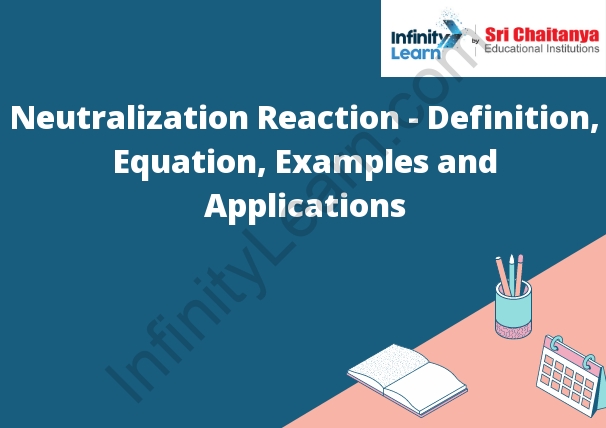Table of Contents
What is Neutralization Reaction?
- Neutralization reaction is a type of acid-base reaction in which an acid and a base react to produce a salt and water. The acid and base can be any type of compound, but they must be able to combine to form a salt. The salt formed in a neutralization reaction is always soluble in water.
- A neutralization reaction is a type of chemical reaction in which an acid and a base react to form a salt and water. The acid and base neutralize each other, and the salt and water are the products of the reaction.
Types of Neutralization Reactions
There are three types of neutralization reactions:
- Acid-base neutralization: In this type of reaction, an acid and a base combine to form a salt and water. For example, hydrochloric acid (HCl) and sodium hydroxide (NaOH) combine to form sodium chloride (NaCl) and water.
- Precipitation neutralization: In this type of reaction, an acid and a base combine to form a precipitate. A precipitate is a solid that forms when two liquids mix. For example, hydrochloric acid (HCl) and sodium hydroxide (NaOH) combine to form sodium chloride (NaCl) and water. The sodium chloride is a solid that forms when the liquids mix.
- Oxidation-reduction neutralization: In this type of reaction, an acid and a base combine to form an oxidizing agent and a reducing agent. An oxidizing agent is a molecule that accepts electrons from another molecule. A reducing agent is a molecule that donates electrons to another molecule. For example, hydrochloric acid (HCl) and sodium

Neutralization Reaction Equation
Neutralization reactions are chemical reactions between an acid and a base. In a neutralization reaction, an acid and a base combine to form a salt and water. The acid and the base cancel each other out, and the salt and water are the products of the reaction.
The equation for a neutralization reaction is:
acid + base → salt + water
The acid and the base are in chemical equilibrium with the salt and the water. The equation can be written in terms of the concentrations of the different species in the reaction.
The concentration of the acid is:
[acid] = (molarity of acid) (liters of acid)The concentration of the base is:
[base] = (molarity of base) (liters of base)The concentration of the salt is:
[salt] = (molarity of salt) (liters of salt)The concentration of the water is:
[water] = (molarity of water) (liters of water)Application
- Neutralization reaction is an acid-base reaction in which an acid and a base react to form a salt and water. In this reaction, the H+ ion from the acid and the OH- ion from the base combine to form water. The salt that is formed in this reaction is a compound that contains the positive ion from the acid and the negative ion from the base.
- One application of neutralization reaction is in the production of baking soda. Baking soda is made by reacting baking soda with an acid. The acid used in this reaction is cream of tartar. Cream of tartar is a compound that contains the tartaric acid molecule. When baking soda and cream of tartar are mixed together, they react to form a salt and water. The salt that is formed in this reaction is sodium tartrate. Sodium tartrate is a white powder that is used in baking.
- Another application of neutralization reaction is in the production of vinegar. Vinegar is made by reacting vinegar with an acid. The acid used in this reaction is apple cider vinegar. Apple cider vinegar is a compound that contains the acetic acid molecule. When vinegar and apple cider vinegar are mixed together, they react to form a salt and water. The salt that is formed in this reaction is acetic acid. Acetic acid is a clear liquid that is used in cooking.
Neutralization Reaction Examples
- There are many different types of chemical reactions, but one of the most common is the neutralization reaction. In this reaction, an acid and a base react to form a salt and water. The acid and base can be either inorganic or organic molecules.
- One example of a neutralization reaction is the reaction between hydrochloric acid and sodium hydroxide. In this reaction, the hydrochloric acid acts as the acid and the sodium hydroxide acts as the base. The salt that is formed is sodium chloride, and the water that is formed is hydrogen chloride gas.
- Another example of a neutralization reaction is the reaction between sulfuric acid and sodium hydroxide. In this reaction, the sulfuric acid acts as the acid and the sodium hydroxide acts as the base. The salt that is formed is sodium sulfate, and the water that is formed is sulfuric acid.






